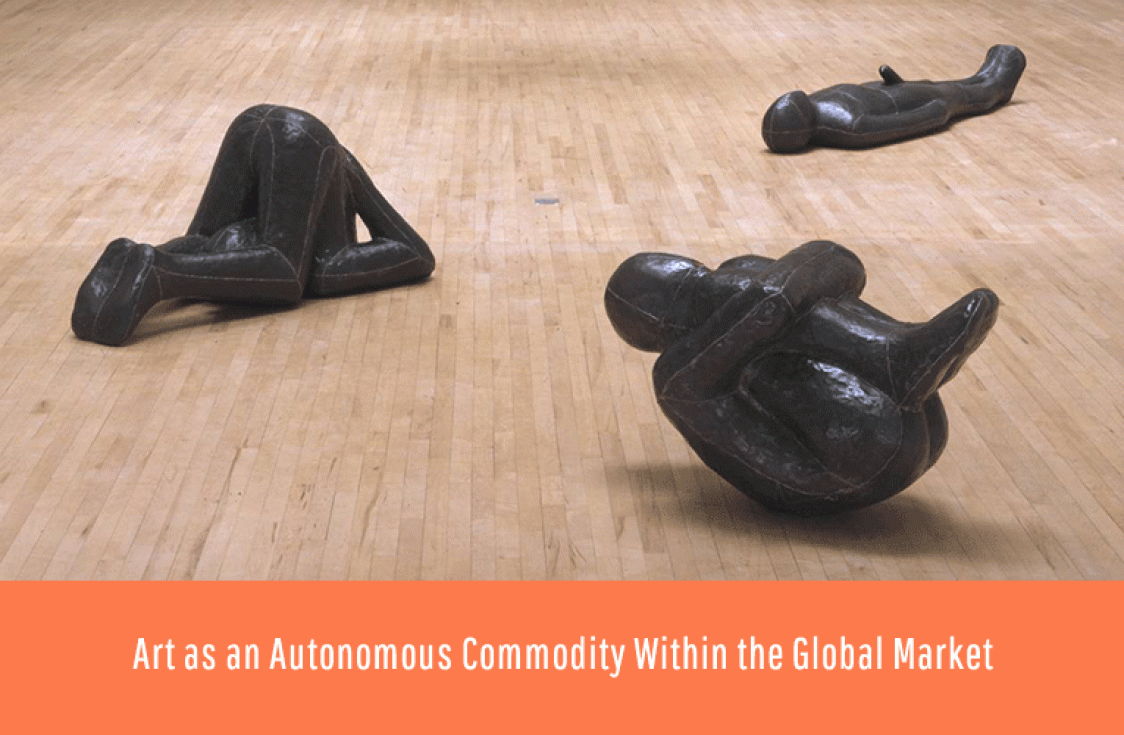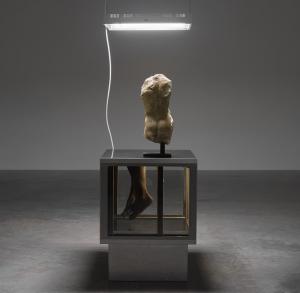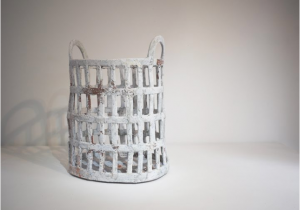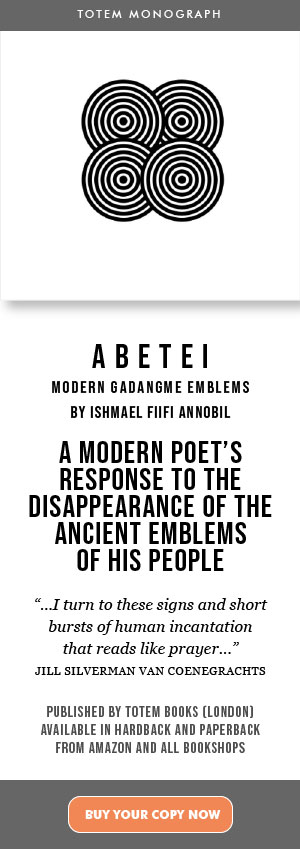By Dan Zimmerman
Art as a commodity embodies intangible concepts and ideas by transforming them into material goods, capable of being marketable, sellable, and collected. Art constantly operates outside of itself interacting with outside sources of investment. By interacting with the global economy art subjects itself to external value measurements via monetary value, celebrity capital, redefinition through criticism, the specifics of purchase, sale, government grants and any other manner by which it perpetuates itself.
Artistic autonomy does not occur as a result of detachment from the market but from its unique position as a sub-market within the global economy. The art market is comprised of commodities embodied by culturally specialized qualities that are often problematic in that they resist being measurable. However, as soon as artworks assume financial value within the art market, it cannot claim to be completely separate from the broader economy in terms of systems of production, promotion and criticism. Jennifer Thatcher argues that the “financial crisis of the past [three] years jump-started the art world’s interest in the economy, and revealed just how much fortune of the art world is tied to financial markets. Collectors and sponsors were melting away… [and] state grants could no longer be taken for granted (Thatcher, 2009/2010, p. 5). Furthermore the ‘invisible hand’ of the market along with Alan Greenspan’s deregulatory policies from the first half of the decade, had noticeable effects on the relationship between art and the market. The acknowledgement that the economy and art are interconnected is an assertion that has enormous implications on art as an entity of self-governance.
The economic system assigns monetary value to instruments that through general consensus, are considered to be of ‘worth.’ The art market, similarly, is a system that revolves around inanimate objects given a degree of legitimacy, often by the monetary price an art object assumes by its transactions within the economic sphere. Through these transactions the object may immediately attach to itself ‘selling points’ of intellect, of reputation, of cultural relevance, and even resistance; qualities that are difficult, if not impossible to define under any system of measurement. Cultural theorist, Terry Eagleton offers insight into the idea that art may transcend systemic titles of value such as money, by “…suspending itself between life and death. The work of art seems full of vital energy, but is no more than an inanimate object. The mystery of art is how black marks on a page, or pigments on a canvas, or the scraping of a bow on a catgut, can be so richly evocative of life”(Eagleton, 2010, p. 71). Isabelle Graw (2009) in her publication “High Price: Art Between the Market and Celebrity Culture” further reinforces the increasingly explicit role of the economy in art. Duchampian declarations of something ‘being art’ or simply just the utterance of the word itself “…evoke(s) a category loaded with value judgments, at the same time as bestowing a seal of quality. And valuation is an essential feature of the economic. As a concept, then “art” is not an economy free zone. Consequently, the notion of art and economy as a pair of polar opposites is untenable” (Graw, 2009, p. 66).
What must be examined is the notion that; if arts value is determined and defined by the economy then in the event of a market collapse, does the value of art also decrease? If the market value becomes the great arbiter of what is valuable within art and what is not, does the work become worth less, or even worthless? The 2008 credit crunch created an economic climate that resulted in the crash of markets worldwide and decreased spending in many sectors, including areas of culture. Thatcher (2009/2010, p. 5) references Tate Triennial curator Nicolas Bourriaud’s assertion “… that we have entered a new ‘altermodernist’ era. [Bourriaud] even went as far as claiming that 2008, the year of the Lehman Brothers collapse, marked the symbolic end to Post-modernism, just as the 1973 oil crisis, according to his argument, prompted the end of Modernism.” Investment in art as a stable commodity has often occurred during periods of recession. The deregulation of oil prices in 1979 by the Carter Administration, and the subsequent energy crisis saw dependable growth from the art market. The art market was considered
“somewhat rigid…[which made it a] …preferred target for many investors, as it assure(d) a great protection against financial crashes. During the oil crisis of 1979, the prices of antique coins and other collections raised substantially. As a result of the stock market’s crash from 1987, the Dow Jones indicator needed 15 months to fully recover. At the same time, the art market recorded one of the most flourishing periods ever. In 2009, art represented 25 % of the total ‘emotional investments’ of the persons with high incomes” (“Art as an investment,” 2011)
A report by the European Fine Art Foundation entitled “The International Art Market 2007-2009, Trends in the Art Trade during Global Recession,” prepared by Dr. Clare McAndrew, a cultural economist specializing in the fine and decorative art market, and founder of Arts Economics, has indicated that “a change in luxury spending habits cau sed by the recession has helped the international art and antiques market weather the global economic storm” (From Yachts…, 2010). Concrete material goods such as works of art, especially “…recognized ‘masterworks’ of classical modernism (Matisse, Picasso)…” (Graw, 2009, p. 26) are seen as favorable assets that are capable of outliving [oneself]. In this palpability art may be likened to gold. However, although gold has a materiality with long-term perceptible value, arguably similar to paintings for example, there are fundamental distinctions between each as an instrument of value. The context of art as a commodity must first be understood within its own fluid environment.
Said ‘value judgments’ within art are influenced by informalities within the market. These may include idle chitchat, secret agreements, rating systems and top ten lists of who’s hot and who’s not, among other attempts to measure value. It may be convenient to argue that artistic autonomy may occur as a form of elitism and privilege, where these value measurements designed to distinguish the merit of work from each other are dripping with specialized language perhaps mistaken, perhaps not, as irrelevant, and even indecipherable. A monetary value then may become a default to the assumed value of art and a common denominator upon which one assigns varying degrees of worth. Can art have a ‘price’ that is capable of being arrived at by some sort of mathematical formula? How then does art assert its worth in an increasingly globalized world where currency is the most prominent and most understood form of value measurement?
The notion of celebrity is a reoccurring concept within art markets. Celebrity artists are notable examples of brands within the art marketplace. Multimillion-dollar brand names such as Damien Hirst already have value assertions attached to their names, by virtue of their reputations and their careers. Hirst’s celebrity image is autonomous in its exclusiveness, yet nevertheless remains a shark floating within the formaldehyde of its own container, frozen by an economy that is anything but still. This was made exceedingly clear by the symbolic coincidence of the Lehman Brothers collapse, which was announced on the same day as the Hirst Sotheby’s auction. This collapse would foreshadow the effect the credit crunch would have on the sale of Hirst’s work the following year. “ By 2009 Hirst’s annual auction sales had shrunk by 93% from just over $270 million to $19 million” (The Art Market…, 2010, p. 99). Hirst’s Sotheby’s Auction “Beautiful Inside My Head Forever” was an inventive and innovative approach that bypassed the primary market of galleries by providing material “straight out of Mr. Hirst’s studio; some of it not yet dry” (The Art Market…, 2010, p. 99). This model of artistic and economic integration was independent of the gallery market, and independent in its breakthrough. The circumvention of the gallery by Hirst may usher in a new era of how art is sold, not just in terms of how the work actually transfers from the artist to the collector, but also in the role of criticism and its traditional impact on the association of art and value. Did the bypass of the gallery by Hirst, and the financial success of the auction, negate the value of the critic?
Art criticism, and promotion has converted much of the ambiguity around the value of specific artworks and artists into valuable creative assets by turning symbolic capital into financial capital, and emerging artists into celebrity brands.
“There are…ways, and means to avoid this “maximum uncertainty on the issue of value. Dealers especially are extremely inventive when it comes to rendering this price plausible. One popular method is to refer to the production costs, making the price appear justified in objective terms. For modern painting, a ‘coefficient’ has been invented for this purpose, taking age, size, artist’s reputation and other factors into account in order to calculate the price in such a way as to avoid the question of value” (Graw, 2009, p. 30).
Where then is the critic’s role? Is it to consider the coefficients of artists, and compare them against the art historical canon, and against their contemporaries, to crown the next celebrity artist, the next affluent cultural producer? Is it to navigate the social openings and events with amazing aptitude; art world Warren Buffet’s who can predict and determine who will be stars and whose time in the limelight is finished? What must be determined in order to accurately assess these questions is ‘who is actually the voice of art criticism in Bourriaud’s ‘altermodernist’ state’? Jennifer Allen seems acutely aware that she may be writing her own eulogy as she examines recent conversations on the “…demise of art criticism. In fact, magazine rankings of top players in the art world almost never list critics. In the popular press, spectacular auction prices trump critics’ opinions. You never read: ‘Koons breaks own record despite Saltz bashing’” (Allen, 2008). Allen (2008) asks is“…criticism still relevant? Has the curator replaced the critic? Or is the collector the new critic?” Hirst’s Sotheby’s auction saw the general exclusion of the traditional critic, the entrance of the collector as the critic, and the auction house as the curator. Thatcher further supports her claim of a market influenced art world by commenting on a deficiency in clear intellectual, and artistic criticism.
“The robust and radical critique of capitalism and neo- liberalism from the traditionally leftist art world… “that might be expected from the art world has-been not necessarily missing but has been “narrowed to such an extent that critique and endorsement of recent economic strategies have been difficult to distinguish” (Thatcher, 2009/2010, p. 6).
In the instance that art was simply a material commodity such as gold, and the collector, as the critic, decided what was most valuable by what had the most “gold-like “ physical qualities, Thatcher’s aforementioned statement would not necessarily raise cause for alarm. However, although Sotheby’s could auction gold bricks just as they can auction off paintings, the status of art as a primary commodity directly associated to its producer, the artist, enables art to claim a certain degree of independence from other material goods.
“Paintings and sculptures remain the locus of yet another kind of value. A painting is in principle the singular physical product of an individual artist’s hand and mind. Its complex textures and color gradations will likely make it impossible to trust the accuracy of any reproduction. As we see it today, “Nude, Green Leaves and Bust” is, down to exquisite detail, exactly what it is because of Picasso’s skill and expressive power. In this respect, the painting is a perfect, intricate and utterly irreplaceable record of a historic artistic achievement” (Dutton, 2010)
Picasso is an artist, whose celebrity namesake has been attributed to enormous symbolic significance, particularly among art investors. His formal style, historical reputation, ‘expressive power and skill’ are all factors within his ‘coefficient’ which transfer into highly viable assets. The intellectual value of artwork, associated with ideas, imagination, and perception among other discerning attributes become selling points for contemporary works. The conversion of ideas into capital is a concept that is applicable within other industries, but which is not as directly attributed to the maker as within art making.
As art is essentially considered to be priceless, regardless of the price exchanged on the market, if the collector becomes the authoritative critic then there is immediately a conflict of interest in determining the symbolic relevance of the artwork in question. There is a need within art to maintain a degree of accountability within its own market to ensure that the value is not only determined by those collecting the physical artworks. By balancing the arbiters of value judgment, art may be more successful in maintaining its own autonomy during market fluctuations comparable to those recently experienced by decades of deregulation. As a result the autonomy of the art model, although inevitably subject to complications by financial instruments, may become stronger as a market, and industry, within a larger, global economy.
( This essay was first published on www.artandeducation.net; reproduced here by permission )
About the author: Dan Zimmerman is a multidisciplinary artist exploring non-linear narratives in film and installation work. He is currently exploring the principles of holography and how they relate to ephemerality, objectivity, and human perception. He is the art director for NuuLife Cinema, and operates out of the A.G.A, a studio in Calgary, Canada. Zimmerman was featured in a full-length documentary on the emerging art scene in Calgary, released in August 2012.
Photo Credits: Three Ways: Mould, Hole and Passage 1981-2 © Antony Gormley and Jay Jopling/White Cube (London); Courtesy of Tate Moden





